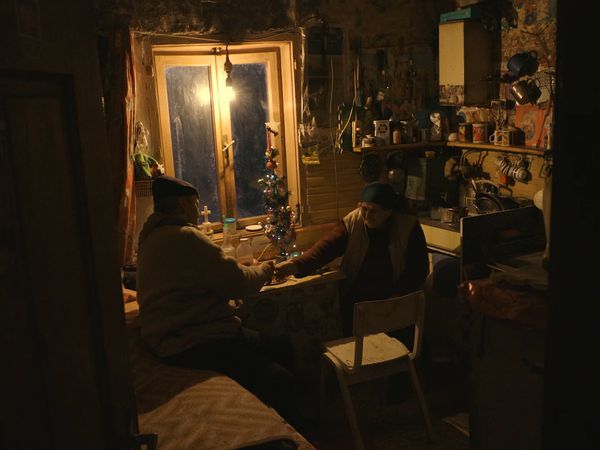Eye For Film >> Movies >> Fran And Verka; Or A Usual Day In An Abandoned Village (2023) Film Review
Fran And Verka; Or A Usual Day In An Abandoned Village
Reviewed by: Nino Metreveli

The short documentary Fran And Verka; Or A Usual Day In An Abandoned Village, by 26-year-old director, writer and editor Sovran Nrecaj, is, in his own words, a 14-minute “micro-history”. The film tells the story of Verka and Fran, an elderly couple living in the now-abandoned Kosovar village of Vërnakollë. After the war in 1999, everyone left the village – everyone except this duo.
At the outset, Nrecaj explains via on-screen text: “Their story is a testament to the unbreakable bonds that tie us to what we call home and to where we belong.” The heart of the documentary lies in its portrayal of the "small" stories of people often lost in the shadows of "big" history. Nrecaj aims to bring attention to this overlooked type of existence.
Verka and Fran have lived in Vërnakollë all their lives; they were married there, stayed through its vibrant years, and remained even as it became deserted. In nations with a recent history of conflict, reflecting on the past can be difficult, and this is part of that reflection.
Nrecaj doesn’t present Verka and Fran as pitiable figures. They have their routine, their moments of rest, when they listen to the radio. They own a donkey and work as best they can. They are poor, but this short isn’t about poverty. Rather, it is about how, despite the hardships, isolation, and deep loneliness, they cannot bring themselves to leave the place they call home.
Nrecaj started his career as a photographer, and this influence is clear throughout. The shots of the depopulated village unfold like a series of collages, with each frame telling its own story. Cinematographer Besim Ugzmajli crafts close-ups of the elderly couple's faces which resemble Rembrandt portraits, capturing the eternal struggle between warmth and cold, light and shadow.
The film is deliberately static, leaving the elderly couple in an apocalyptic state where only they remain, their only solace being each other. Yet, this sense of desolation seems to exist only outside their home – in the images of forsaken houses and empty church. Inside their house itself, there is warmth.
No one speaks in this documentary; we only "hear" what we see. It’s only in the final sequence that music begins to play – an organ melody. The last few shots create a contrast between the house and its surroundings. Outside, it’s cold, and everything seems frozen in time, but inside Verka and Fran’s home, they are having dinner by the glow of a small, Christmas tree with lights.
As the film ends, the music fades away, and we see them through the window as they begin their meal. Nrecaj’s work, in its quiet simplicity, offers more than a glimpse into a forgotten village. It asks a universal question: What is home, and what compels us to stay, even when leaving seems like the easier choice? As Verka and Fran share their meal, they aren’t just holding on to the essence of what it means to belong – something so many of us can feel in our bones, no matter how far we go. In a world of deserted places and scattered lives, it’s this unshakeable bond to home that lingers after the final frame fades.
Reviewed on: 17 Oct 2024














